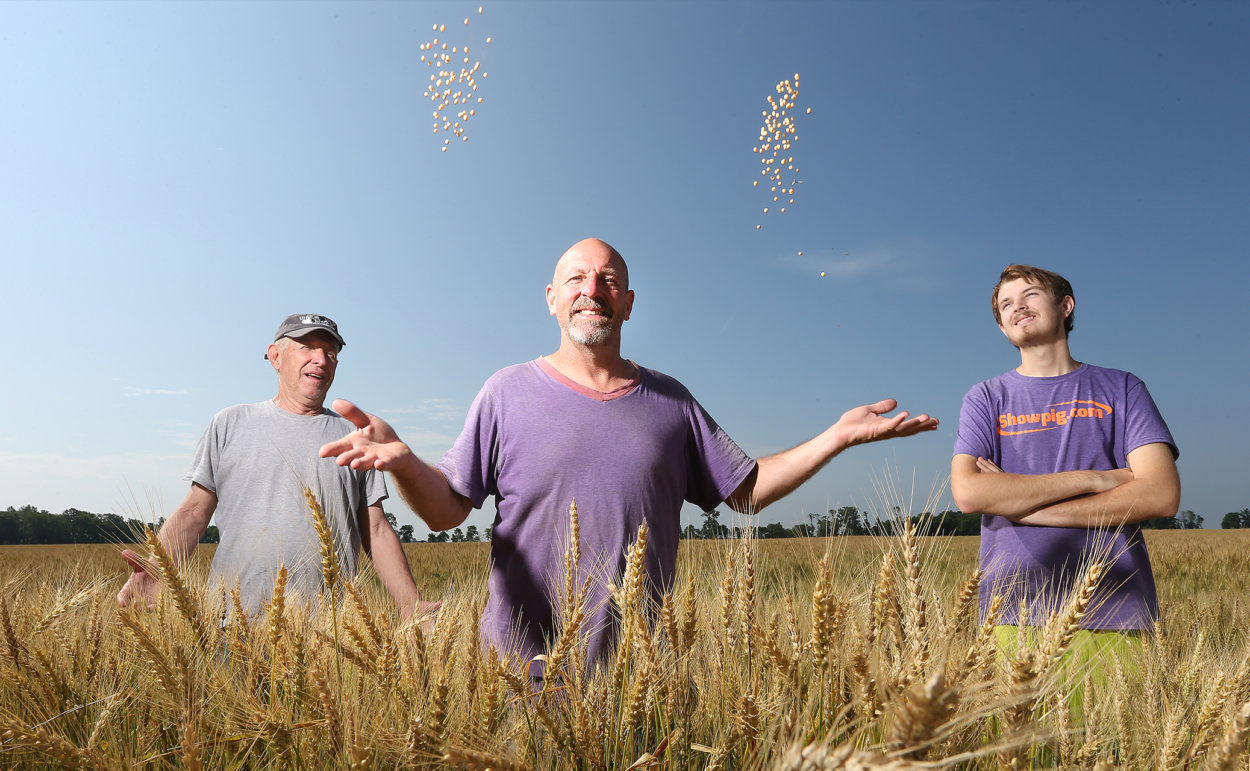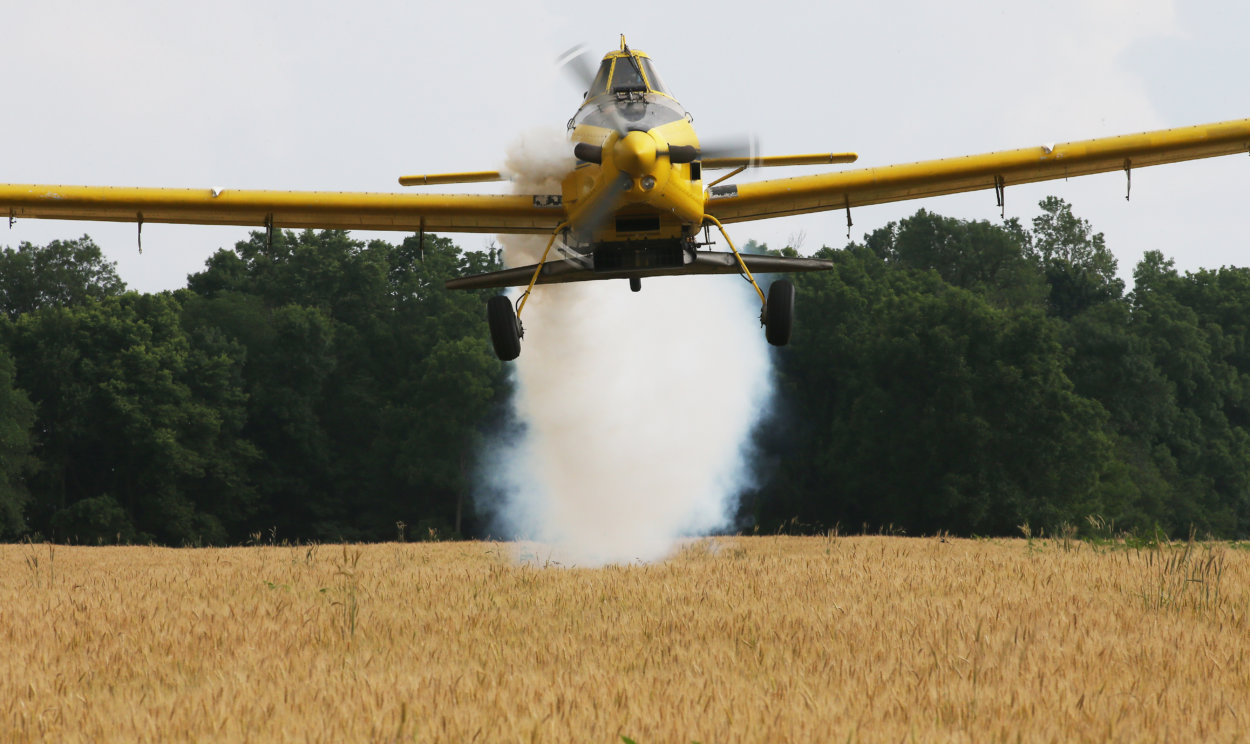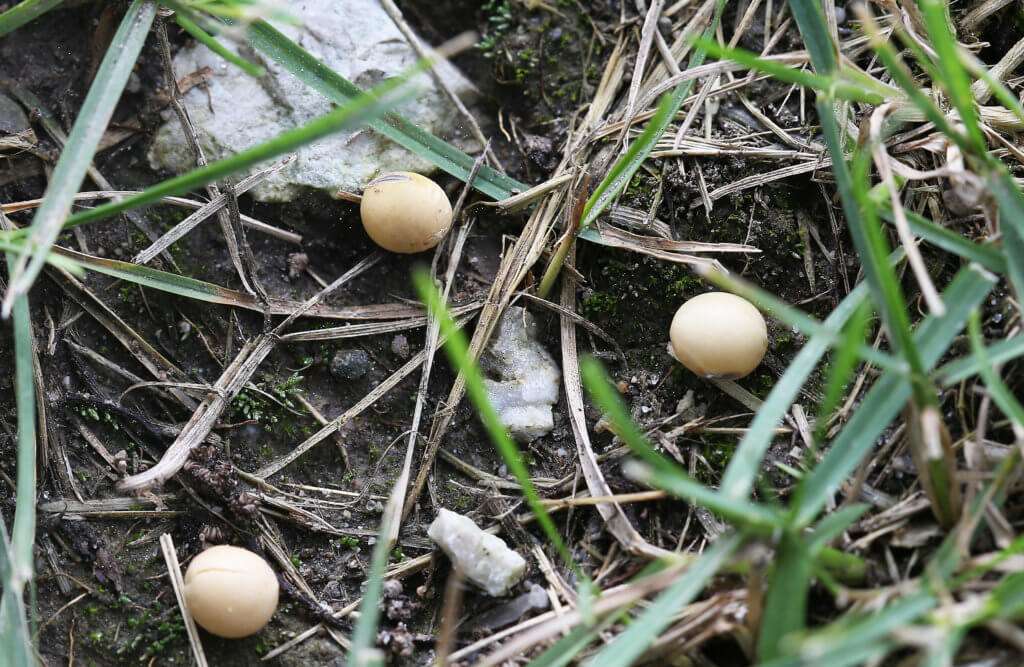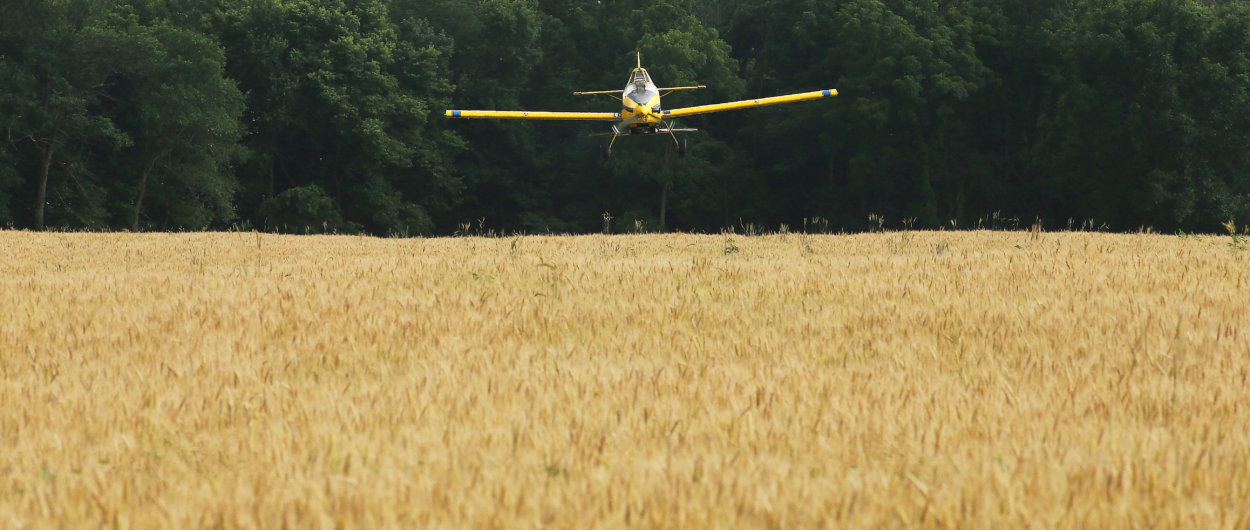It was raining this week in Montgomery County.
No surprise there, in this, the soggiest season in memory. But what it was raining was a bit odd.
Soybeans.

Tiny golden pellets fell from the sky thanks to farmer Kyle Blaydes and an idea he hatched over lunch at the Buffalo Wild Wings restaurant on the south end of Crawfordsville.
“I was having lunch with the manager of my co-op (Sam Fry) and my seed guy (Deric Hitch), said Blaydes (BS ’97), whose family farms about 2,300 acres, primarily in Montgomery County. Two of his wheat fields are not maturing at a traditional rate, thanks to the cool, wet Indiana spring."
Typically, Blaydes would harvest wheat well before the end of June, leaving plenty of time to prepare a seedbed for a second crop of short-season soybeans. His family would harvest after the first killing frost this fall.
But too much water and too little sunshine make Blaydes think he’ll still be harvesting wheat sometime after July 4th, which wouldn’t give the soybean crop enough time to grow.
So before the buffalo wings were on the table, Blaydes tabled an idea.
“I mentioned a Facebook photo I saw of a helicopter planting soybeans and I thought “Why not us?”
Blaydes, Fry, and Hitch began to work the phones.

“We had a crop duster (from Bi-State Air, Inc.) on one phone and some seed people on the other trying to figure out how quickly we could make this happen.”
And before the B-Dub’s bill arrived, the wheels were rolling. Cottingham flew the yellow crop duster from his home base near Attica (Fountain County) to the Crawfordsville Municipal Airport, where a delivery of soybean seeds was waiting.
And by 6 pm, Blaydes had effectively made it rain soybeans on one of his two wheat fields. Seed was falling out of the bottom of the plane at a rate of about 100-lbs. per acre (a typical ground application rate is around 70-lbs. per acre).

“We had to go with a high rate because planting with a plane is not as exact as using a traditional planter.”
As for expectations, Blaydes is keeping an open mind.
“If we get some more rain, that will help the soybeans germinate. And if we get good germination, we could get 45-50 bushels per acre. But if we don’t get good germination, we could also get zero bushels per acre.”
Purdue soybean expert Shaun Casteel likes his chances.

“Planting soybeans from a plane has been done before with various degrees of success,” said Casteel, an associate professor of agronomy. “With the seed dropped into a harvested wheat field that still has some standing straw as a cover, I think it has a better chance than dropping it from a plane into a field that has been completely cleared off.”
Blaydes admits it is a gamble, so he is hedging his aviation bet.
“Everything we do in farming is a gamble,” Blaydes said. “It’s always a risk. I have two wheat fields, each about 55 acres. I’m willing to risk half, so we only dropped seed just one of the two fields. But I’m not willing to do this on both fields.”

Pilot Ray Cottingham flies well below the treeline, preparing to drop a load of soybeans on Kyle Blaydes’ wheat field in Montgomery County.





